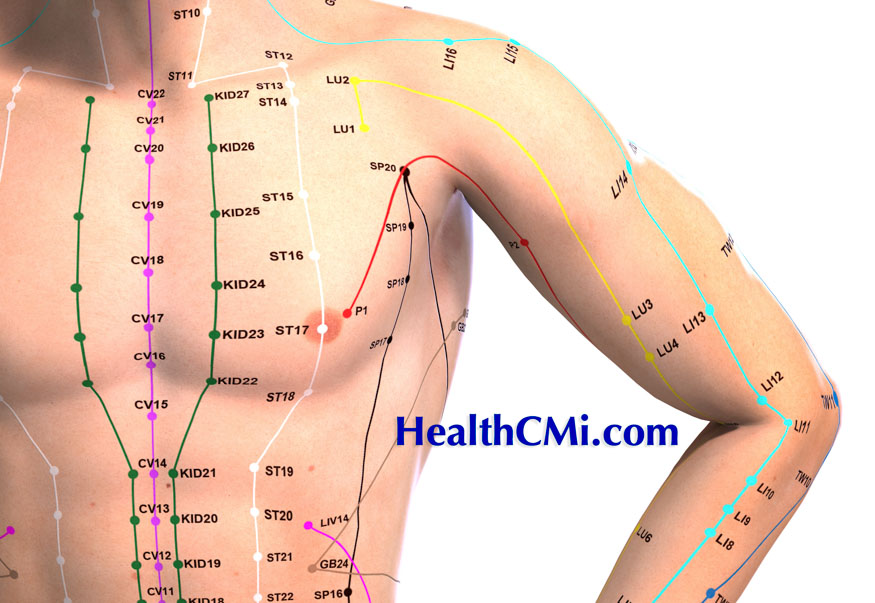
Acupuncture is effective for treating post-stroke hemiplegic shoulder pain (HSP). One type of electroacupuncture was discovered to have optimal outcomes. Researchers from the first affiliated hospital of Anhui University of Traditional Chinese Medicine conducted a clinical trial using a sample of 105 cases to compare the efficacy of electroacupuncture at various frequencies and wave types. The results of the experiment indicate that the 2 Hz/100 Hz disperse-dense wave yielded superior outcomes. [1]
From June 2021 to August 2022, 105 cases with HSP were recruited for the study. The patients were randomly assigned to three groups: a manual acupuncture group, a continuous wave group, and a disperse-dense wave group, with 35 patients in each group. Three cases dropped out of the manual group, and two cases dropped out of the continuous group during the study. All participants experienced acute loss of nerve function, confirmed by CT or MRI scans that indicated a stroke.
Secondary etiologies were excluded. All patients were first-time onset cases experiencing a VAS score exceeding 24 points and a duration of the condition of less than six months. The statistical baselines were consistent across all three groups.
The primary observation parameter in the study was the Visual Analogue Scale (VAS). Supplementary parameters included the passive range of motion (PROM), the Lovett Scale, the Modified Barthel Index (MBI), and the Fugl-Meyer assessment (FMA). Indices were compared from data points before and after treatments.
Upon completion of the treatments, all groups showed reduced pain scores (VAS) with significant differences. The two electroacupuncture groups displayed lower pain scores compared with the manual acupuncture group. Moreover, after 4 weeks, the disperse-dense wave method group showed even lower pain scores than the continuous wave method. Additionally, the treatment increased shoulder mobility, muscle strength, and functional scores (MBI and FMA) in all groups, with greater improvements in the electroacupuncture groups than in the manual acupuncture group. The electroacupuncture groups exhibited higher shoulder mobility and muscle strength, while the disperse-dense wave approach showed higher functional scores than manual acupuncture group after treatment.
The acupuncture therapy was conducted by senior acupuncturists. Rehabilitation therapy was administered upon completion of the acupuncture treatments, which involved shoulder joint relaxation and weight-lifting exercise.
For the manual needling group, patients took a lateral position. The following points were used:
- LI15 (Jianyu)
- SI9 (Jianzhen)
- TB14 (Jianliao)
- MUE48 (Jianqian, extra point)
- LI11 (Quchi)
- LI10 (Shousanli)
- TB3 (Zhongzhu)
- SI3 (Houxi)
- LI4 (Hegu)
For Jianyu, needles (0.35 mm × 60 mm) were obliquely inserted to a maximum length of 50 mm. For Jianzhen, Jianqian, and Jianliao, needles (0.30 mm × 50 mm) were perpendicularly inserted with an insertion length of 25–40 mm. An attenuating manipulation method was applied.
For Quchi and Shousanli, needles (0.30 mm × 40 mm) were obliquely inserted with an insertion length maximum of 25 mm. For Zhongzhu, Houxi, and Hegu, needles (0.25 mm × 25 mm) were obliquely inserted with an insertion length of 12–20 mm. Needle retention time was 30 minutes.
The continuous wave group used a 15 Hz wave. Upon achieving deqi, two pairs of acupoints (Jianyu-jianliao and Quchi-Shousanli) were connected to an electroacupuncture device. Intensity was set to patients’ tolerance level. Thirty-minute treatments were performed. The disperse-dense wave group used a 2 Hz/100 Hz wave. All three groups received treatment once every morning for five consecutive days per week for four weeks.
Reference:
[1] Ding Yuju, Liu Zhaoyong, Xiao Rong, Zhang Bo, Clinical Observation of Electroacupuncture with Different Frequencies in Treatment of Hemiplegic Shoulder Pain after Stroke, Chinese Acupuncture & Moxibustion, Aug. 2023, Vol. 43, No. 8.


